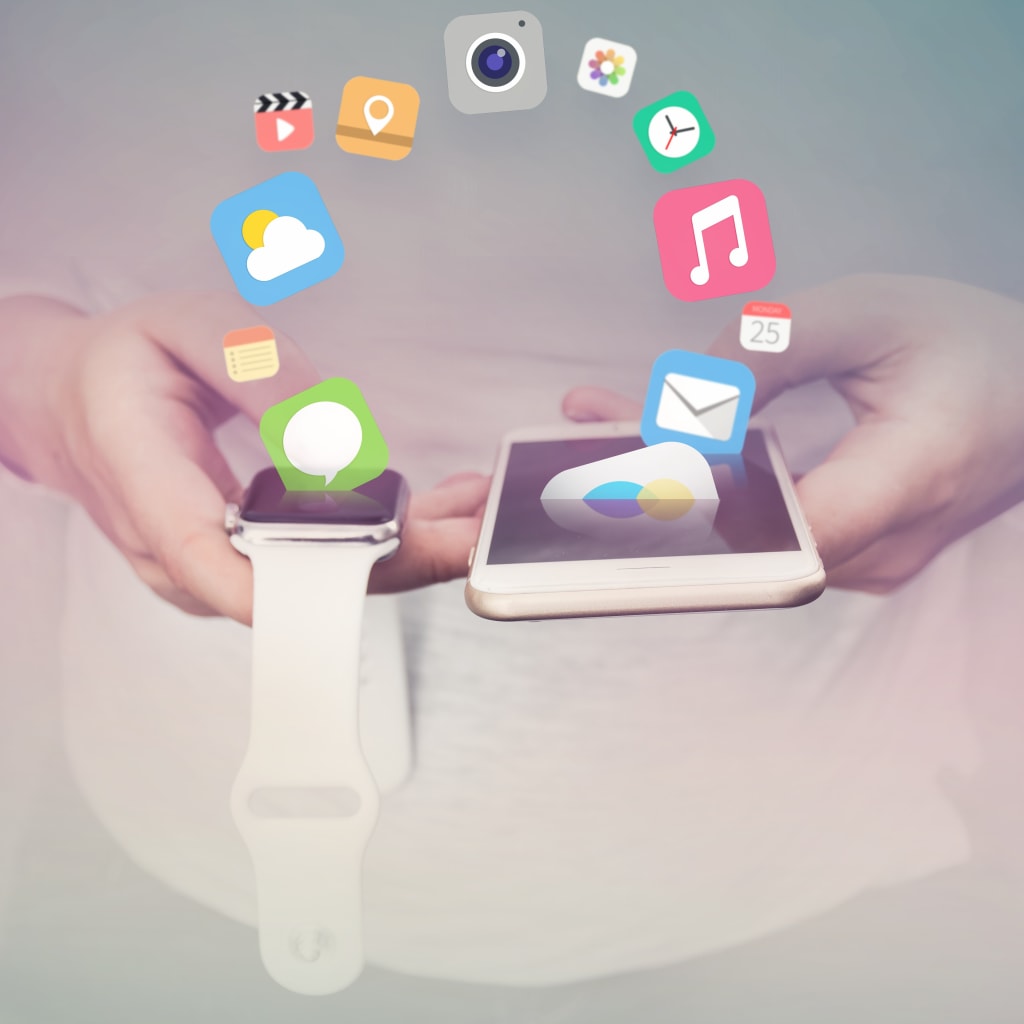Smarter Devices
Exploring the Convenience and Potential Risks of the Growing Smart Device Industry

I. Introduction
A. Explanation of the concept of smart devices
B. The benefits of using smart devices
C. The growth of the smart device market
II. Types of Smart Devices
A. Smartphones
B. Smart home devices (e.g. thermostats, security systems)
C. Smart appliances (e.g. refrigerators, washing machines)
D. Smart speakers and assistants (e.g. Amazon Echo, Google Home)
E. Wearable technology (e.g. smartwatches, fitness trackers)
III. How Smart Devices Improve Our Lives
A. Increased convenience and efficiency
B. Improved communication and connectivity
C. Enhanced security and control over our homes
D. Increased ability to track and improve our health
E. Improved entertainment experiences
IV. Potential Drawbacks of Smart Devices
A. Privacy concerns
B. Dependence on technology
C. Vulnerability to hacking and cyber attacks
D. Potential for overuse and addiction
E. The cost and the need for regular updates
V. Future of Smart Devices
A. Advancements in technology
B. Increased integration with other devices and systems
C. Expansion into new areas and industries
D. Potential for the development of new types of smart devices
E. The role of artificial intelligence in the future of smart devices
VI. Conclusion
A. Recap of the benefits and potential drawbacks of smart devices
B. Discussion of the importance of being aware of the potential downsides
C. The potential for future developments in the smart device industry
D. Encourage readers to consider how smart devices can be used to improve their lives
E. Final thoughts on the future of smart devices.
I. Introduction
A. Explanation of the concept of smart devices
A smart device is a device that is equipped with internet connectivity and advanced features such as sensors, software, and artificial intelligence, allowing it to perform a variety of tasks and interact with other devices. These devices are designed to make our lives more convenient and efficient by automating or simplifying various tasks. Some examples of smart devices include smartphones, smart home devices such as thermostats and security systems, smart appliances like refrigerators and washing machines, smart speakers and assistants like Amazon Echo and Google Home, and wearable technology such as smartwatches and fitness trackers. With the help of these devices, we can control and monitor our homes, schedule and keep track of our appointments, and even improve our health and fitness.
B. The benefits of using smart devices
- Increased convenience and efficiency: Smart devices allow users to easily perform a variety of tasks with just a few simple commands or taps on a smartphone. For example, with a smart thermostat, you can adjust the temperature of your home from anywhere using your smartphone, while a smart fridge can automatically order groceries when you run out of certain items.
- Improved communication and connectivity: Smart devices allow users to easily stay connected with friends and family through various means such as video calling, texting, and instant messaging. Additionally, smart devices enable seamless integration with other devices and systems, allowing for greater control and automation of various tasks.
- Enhanced security and control over our homes: Smart devices such as security cameras and smart locks provide an extra layer of security for homes and give you the ability to monitor and control access to your home from anywhere.
- Increased ability to track and improve our health: Wearable technology such as smartwatches and fitness trackers allow users to easily track and monitor their fitness levels, sleep patterns, and other health metrics, which can be helpful for people who want to improve their well-being.
- Improved entertainment experiences: Smart devices such as smart TVs and streaming devices provide a wide range of entertainment options, allowing users to easily access their favorite movies, TV shows, and music. With smart devices, it's easy to customize the entertainment experience and have a more personalized experience.
- Energy savings: Smart devices such as smart thermostats and smart plugs allow you to monitor and control your energy usage, which can lead to significant energy savings.
- Cost savings: Smart devices can also help you save money in the long run. For example, a smart irrigation system can help you save on water bills, while a smart shopping list can help you avoid buying unnecessary items.
- Improved productivity: Smart devices such as smart pens, smart notebooks, and smart whiteboards can help users to create, organize, and share their work more efficiently, making them more productive.
Overall, smart devices make our lives more convenient, efficient, and can help us to improve our well-being, save money and energy, and be more productive.
C. The growth of the smart device market
The smart device market has been growing rapidly in recent years. According to research firm Gartner, global sales of smart devices are projected to reach 9.1 billion units in 2021, an increase of 8.2% from the previous year. The market for smart home devices is expected to be one of the fastest-growing segments, with a projected growth rate of 24.5% in 2021.
The smartphone market is also a major contributor to the growth of the smart device market. The worldwide smartphone market is expected to grow at a steady pace, with shipments expected to reach 1.9 billion units in 2021, an increase of 6.9% from 2020.
The market for wearables is also on the rise, with shipments projected to reach 446 million units in 2021, an increase of 18.4% from the previous year. Smartwatches and fitness trackers are driving the growth of this market.
The smart device market is also expected to continue to expand into new areas and industries in the future, such as smart cities, smart transportation, and smart healthcare. As technology continues to advance, the capabilities of smart devices are also expected to expand, leading to even more growth in the market.
Overall, the smart device market is expected to continue to grow at a steady pace in the coming years, driven by the increasing popularity of smartphones, smart home devices, wearables and the expansion into new areas and industries.
II. Types of Smart Devices
In this section, you can discuss the different types of smart devices that are currently available in the market. You could include the following subheadings:
A. Smartphones: Smartphones are one of the most popular types of smart devices. They come equipped with advanced features such as internet connectivity, sensors, software, and artificial intelligence, allowing users to perform a wide range of tasks such as making calls, sending texts and emails, browsing the internet, and using various apps.
B. Smart home devices: Smart home devices include a wide range of products such as thermostats, security systems, lighting control systems, and smart appliances like refrigerators, washing machines, and ovens. These devices allow users to control and monitor their homes from anywhere and make their lives more convenient and efficient.
C. Smart speakers and assistants: Smart speakers and assistants, like Amazon Echo and Google Home, allow users to control various smart home devices and access information through voice commands. These devices can also play music, set reminders, and answer questions.
D. Wearable technology: Wearable technology includes products such as smartwatches, fitness trackers, and smart glasses. These devices allow users to track their fitness levels, monitor their health, and stay connected to their smartphones and other devices.
E. Smart transportation devices: Smart transportation devices include devices such as GPS navigation systems, smart cars, and smart bike locks. These devices can provide information on traffic conditions, suggest the best routes to take, and even allow the user to remotely start the car.
F. Smart healthcare devices: Smart healthcare devices include devices such as smart scales, blood glucose monitors, and smart pill dispensers. These devices allow users to track and monitor their health, and can also send data to healthcare providers for remote monitoring.
This section could also include descriptions and examples of each type of device, as well as their specific features and capabilities.
III. How Smart Devices Improve Our Lives
In this section, you can discuss how smart devices have the potential to improve our daily lives in various ways. Some of the subheadings you could include are:
A. Increased convenience and efficiency: Smart devices automate and simplify various tasks, allowing users to accomplish more with less effort. This can help to save time and make our daily lives more convenient.
B. Improved communication and connectivity: Smart devices allow users to stay connected with friends and family through various means such as video calling, texting, and instant messaging. Additionally, smart devices enable seamless integration with other devices and systems, allowing for greater control and automation of various tasks.
C. Enhanced security and control over our homes: Smart devices such as security cameras and smart locks provide an extra layer of security for homes and give users the ability to monitor and control access to their homes from anywhere.
D. Increased ability to track and improve our health: Wearable technology such as smartwatches and fitness trackers allow users to easily track and monitor their fitness levels, sleep patterns, and other health metrics. This can help users to improve their overall health and well-being.
E. Improved entertainment experiences: Smart devices such as smart TVs and streaming devices provide a wide range of entertainment options, allowing users to easily access their favorite movies, TV shows, and music. With smart devices, it's easy to customize the entertainment experience and have a more personalized experience.
F. Energy savings: Smart devices such as smart thermostats and smart plugs allow users to monitor and control their energy usage, which can lead to significant energy savings.
G. Cost savings: Smart devices can also help users save money in the long run. For example, a smart irrigation system can help save on water bills, while a smart shopping list can help users avoid buying unnecessary items.
H. Improved productivity: Smart devices such as smart pens, smart notebooks, and smart whiteboards can help users to create, organize, and share their work more efficiently, making them more productive.
This section could also include examples and personal experiences to illustrate the ways in which smart devices have improved people's lives.
IV. Potential Drawbacks of Smart Devices
In this section, you can discuss the potential drawbacks of smart devices. Some subheadings you could include are:
A. Privacy concerns: Smart devices collect and store a large amount of personal data, which can raise concerns about privacy and security. This data can be vulnerable to hacking and cyber attacks, which can lead to personal information being stolen or misused.
B. Dependence on technology: Smart devices can make our lives more convenient, but they can also make us overly dependent on technology. This can lead to issues such as disconnection from the physical world, overreliance on automation, and reduced critical thinking skills.
C. Vulnerability to hacking and cyber attacks: Smart devices are often connected to the internet, which makes them vulnerable to hacking and cyber attacks. This can lead to personal information being stolen, smart devices being controlled by unauthorized individuals, and even physical harm in some cases.
D. Potential for overuse and addiction: Smart devices can be addictive, and overuse can lead to issues such as sleep disorders, decreased productivity, and even addiction.
E. The cost and the need for regular updates: Smart devices can be expensive, and some devices require regular updates to keep them functioning properly. This can be a financial burden on some users, and can also lead to frustration when devices stop working properly.
F. Disposal and recycling: The rapid growth of the smart device market also generates e-waste, the disposal and recycling of which is a growing concern.
In this section, you can also mention the importance of being aware of these potential drawbacks, and discussing ways in which they can be mitigated, as well as the importance of being responsible and mindful when using smart devices.
V. Future of Smart Devices
In this section, you can discuss the future of smart devices and the potential advancements in technology that will shape the industry. Some subheadings you could include are:
A. Advancements in technology: The smart device industry is constantly evolving, and new technologies such as 5G, edge computing, and the Internet of Things (IoT) are expected to drive further growth and development in the industry.
B. Increased integration with other devices and systems: Smart devices are expected to become even more integrated with other devices and systems, such as transportation systems, healthcare systems, and smart cities. This will lead to even greater control and automation of various tasks.
C. Expansion into new areas and industries: Smart devices are expected to expand into new areas and industries in the future, such as smart transportation, smart healthcare, and smart cities.
D. Potential for the development of new types of smart devices: With advancements in technology, new types of smart devices are expected to be developed, such as smart clothing, smart contact lenses, and smart implants.
E. The role of artificial intelligence in the future of smart devices: Artificial intelligence (AI) is expected to play a major role in the future of smart devices, allowing for even greater control and automation of various tasks, as well as the ability to learn and adapt to user preferences.
F. Sustainability and environmental impact: As the smart device market continues to grow, the industry will also have to focus on sustainability and environmental impact, ensuring that devices are designed to be recyclable, have a low environmental impact and take into account the lifecycle of the device.
In this section, you can also discuss the potential implications of these advancements and how they may shape the future of our daily lives.
VI. Conclusion
In the conclusion section, you can summarize the main points discussed in the blog and provide a final thoughts on the topic. Some subheadings you could include are:
A. Recap of the benefits and potential drawbacks of smart devices: Summarize the benefits of smart devices such as increased convenience and efficiency, improved communication and connectivity, and enhanced security and control over our homes, as well as the potential drawbacks such as privacy concerns, dependence on technology, vulnerability to hacking and cyber attacks, potential for overuse and addiction, and the cost and need for regular updates.
B. Discussion of the importance of being aware of the potential downsides: Mention the importance of being aware of the potential downsides of smart devices and the need to address these issues, in order to make the most of the benefits of these devices.
C. The potential for future developments in the smart device industry: Discuss the potential for future developments in the smart device industry and how they may shape the future of our daily lives.
D. Encourage readers to consider how smart devices can be used to improve their lives: Encourage readers to think about how they can use smart devices to improve their daily lives, while also being mindful of the potential downsides.
E. Final thoughts on the future of smart devices: Provide your final thoughts on the future of smart devices, discussing the potential impact of these devices on our daily lives, and the need for responsible use and sustainable design.
About the Creator
Enjoyed the story? Support the Creator.
Subscribe for free to receive all their stories in your feed. You could also pledge your support or give them a one-off tip, letting them know you appreciate their work.





Comments
There are no comments for this story
Be the first to respond and start the conversation.